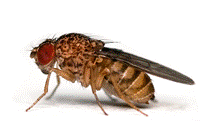Papers in the Biological Sciences

Lawrence G. Harshman Publications
Document Type
Article
Date of this Version
2002
Citation
Functional Ecology 16 (2002), pp. 313–325
Abstract
1. Inasmuch as virtually all studies on mortality and reproduction in insects are conducted under conditions in which food availability is constant, little is known about the demographic response of insects to variable food environments. For example, it is not known if and to what extent the life expectancy of insects subjected to shortages of high-quality food will increase and/or whether this increase is associated with major decreases in lifetime reproduction.
2. Therefore cohorts of 100 individual female medflies were subjected to different sets of conditions of protein availability (interspersed with sugar-only diets) including ad libitum sugar-only (no protein), ad libitum protein and full (protein) diet either every 2nd, 4th, 6th, 11th, or 21st day, as well as two lag-treatments (1 day full diet followed by 30 days sugar-only, followed by one of two cyclical treatments).
3. Both life expectancy and lifetime reproduction were strongly affected by specific treatments. Specifically (i) mortality was inversely related to frequency of protein availability whereas lifetime reproduction was directly related; (ii) distinct cycles in reproduction began to appear when food pulse cycles were as short as every 4 days. However, egg-laying peaks and troughs were particularly pronounced in the 10- and 20-day food pulse cycles; (iii) the peak and trough levels were inversely related to cycle length; and (iv) the within-cycle height was independent of cycle length, occurring 4 days after protein food was made available to the cohort whether the cycle length was 5, 10 or 20 days.
4. The results shed new light on the within- and between-cycle and lifetime dynamics of reproduction when insects are subjected to variable food environments and indicate that medfly females track food level very closely.


Comments
Copyright © 2002 British Ecological Society. Used by permission.